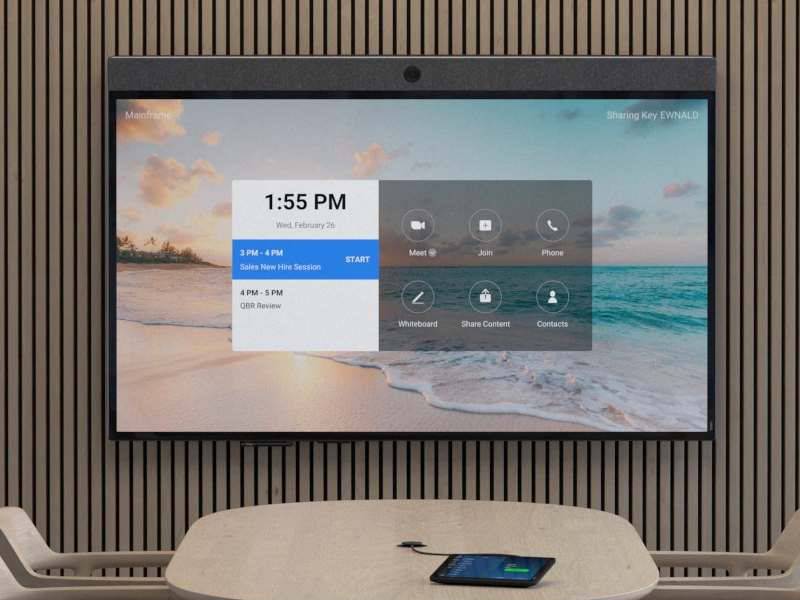An interactive screen is a sophisticated piece of technology that could transform your video conferencing and collaboration solutions entirely, but with such a sensational impact, how could you choose?
When choosing an interactive screen, it is important to not transfix yourself upon the surface details. Obviously, the size of the screen will be a key determinant in your decision, but you should familiarise yourself with why this is important. Screen size requirements will change depending on the ergonomics of the room and how many people will be using or viewing the screen.
That is an example of why it is important to know how to choose an interactive display. Generally, from the untrained eye the fixation would be typically on trying to determine quality in conjunction with screen size. However, there are many other factors that contribute to the quality of an interactive screen.
1. Compatible Platforms
This often overlooked factor can actually lead to a grave error on your part. Presently, with the rising prominence of video conferencing platforms, there has been an increase in the number of integrated video conferencing.
Therefore, the integration of video conferencing platforms can be a make-or-break aspect of your device. They can streamline or even revolutionise your approach to meetings. Alternatively, if you are ignorant to this factor, you may own a device optimised for a different meeting software than you would benefit from using.
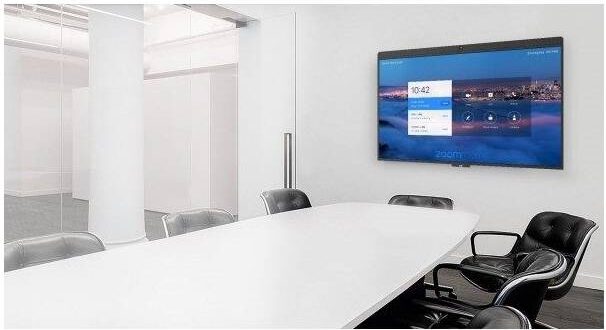
There are many meeting softwares that have been popularised for integration with touch devices like Zoom, Microsoft Teams and Google Meet among others. There is also UC (Unified Communications) which is optimised for general use but isn’t optimised for individual platform specialities.
An example of this specialisation is the DTEN D7 which is optimised for Zoom Rooms. This optimisation notably allows for synergy between the device’s hardware and software through clarity of purpose. The software is already downloaded, integrated and is intuitively designed to be simple to join a meeting.
The aforementioned synergy is aided by the ability to match the integrated camera, microphone array and speakers to levels best suited for the application.
2. Integrated Video Camera
The purpose of the interactive screen is an essential consideration when deciphering the best model and features to select. If video conferencing is a consideration, then an integrated video camera can be extremely helpful.
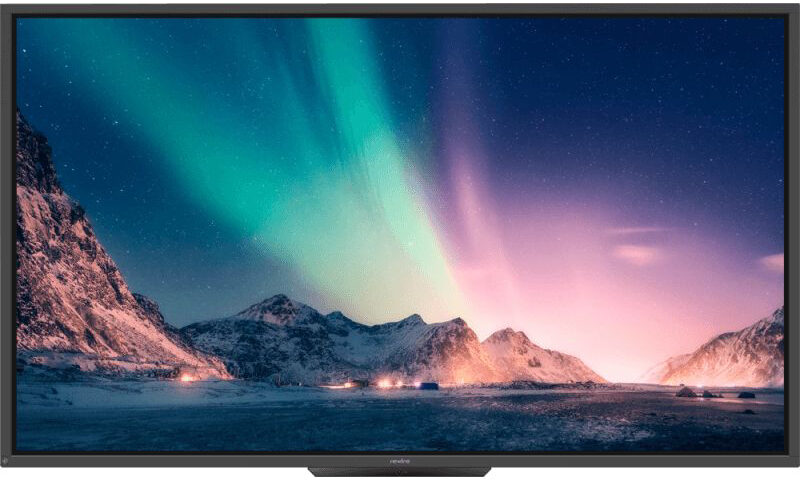
If video conferencing is the main purpose of the screen then a logical feature to prioritise would be an integrated came to provide an all-in-one solution without the need for external equipment.
The Newline MIRA is perfect for this purpose. The Full HD integrated camera ensures that the picture is transmitted in crystal clear detail to ensure clarity.
3. Collaborative Content
Due to the technological and dispersed world in which we exist, the in-person aspects can be forgotten. However, interactive screens are designed with this in mind. Interactive whiteboards are an important tool as well as multi-touch technology.
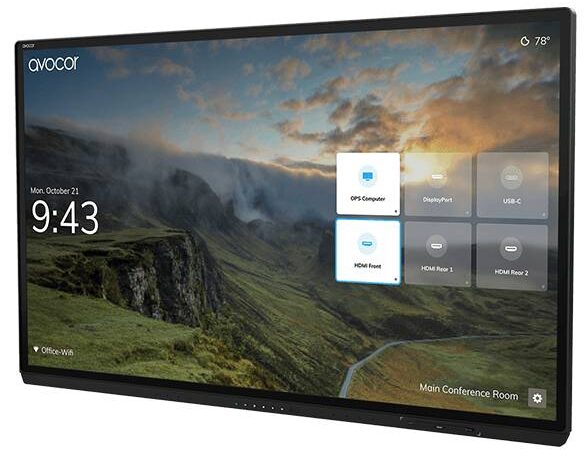
These tools boost the collaboration capabilities and possibilities of your meeting room by allowing the localised collaborators to operate on the same surface. The multiple touch points permit several people to simultaneously affect the screen. If in person collaboration is a priority, the Avocor G-Series is an appropriate choice.
The Avocor G-Series represent the pinnacle of in-person collaboration. The screen has anti-glare and anti-smudge coating ensuring visibility from every angle and defined colours and imagery. There is also zero parallax between the screen and the display for pinpoint accuracy at the touch point.
Intelligent object recognition allows the screen to understand the type of input, whether it is a stylus, a finger, or a hand. This technology allows multiple people to affect the screen or to make multipoint gestures for increased control.
4. Wireless Content Sharing
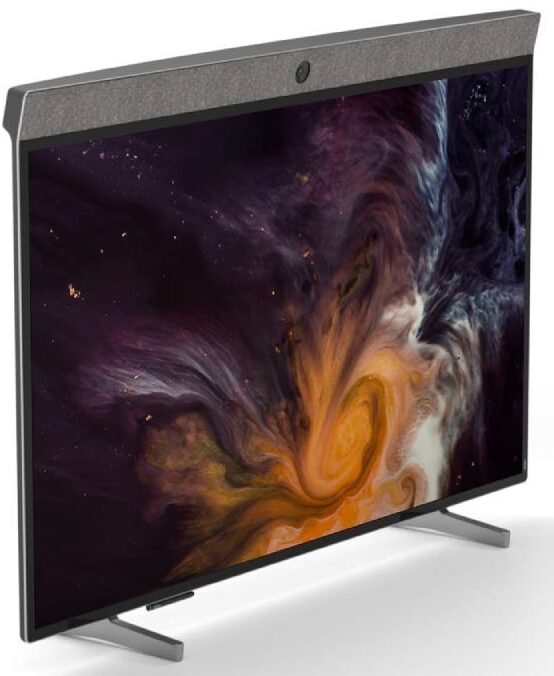
Wireless content sharing is an extremely convenient way to transcend the barrier between localised collaboration and geologically dispersed communications. Significantly, some interactive screens have sensors that can analyse a room and identify people and objects present in the room. Some screens have a wake-up feature that can identify when someone enters a room and remains in standby otherwise.
The Neat Board undeniably exemplifies the features of wireless sharing and advanced sensors. With the Neat Board you have greater autonomy and flexibility going forward to collaborate how you see fit. The device detects your presence as you go into the meeting space and turns on automatically. You may initiate a conference, share your screen wirelessly, or annotate something with only a single tap on the screen.
Whether you’re in the same room as the meeting or using video conferencing, it’s ideal for taking notes, organising thoughts, and giving quick visual feedback.
For your wireless content sharing needs the Neat Board has the option to be integrated between either Zoom or Microsoft Teams. This flexibility allows you to choose between the software that will most effectively aid the licenses the business possess. Thus allowing the content sharing to be more precise and targeted.
5. Connectivity Choice
For interactive screens to be able to receive and transmit data, connectivity is also necessary. User input, visual, audio, and video, as well as other sorts of data, can all be included in this data. This data may be sent between interactive screens in real-time with the correct connectivity options, making the experience more interactive and interesting.
Thus, choosing the solution with the most appropriate connectivity ports can give your business the best chance of success in these endeavors.
HDMI is essential to connect laptops or other devices to bolster your solution.
DisplayPort and VGA can also offer solutions to connecting computers, monitors and audio/video devices to your solution.
Meanwhile, USB is often used to connect peripheral equipment, like a mouse, a keyboard or a headset to the interactive screen.
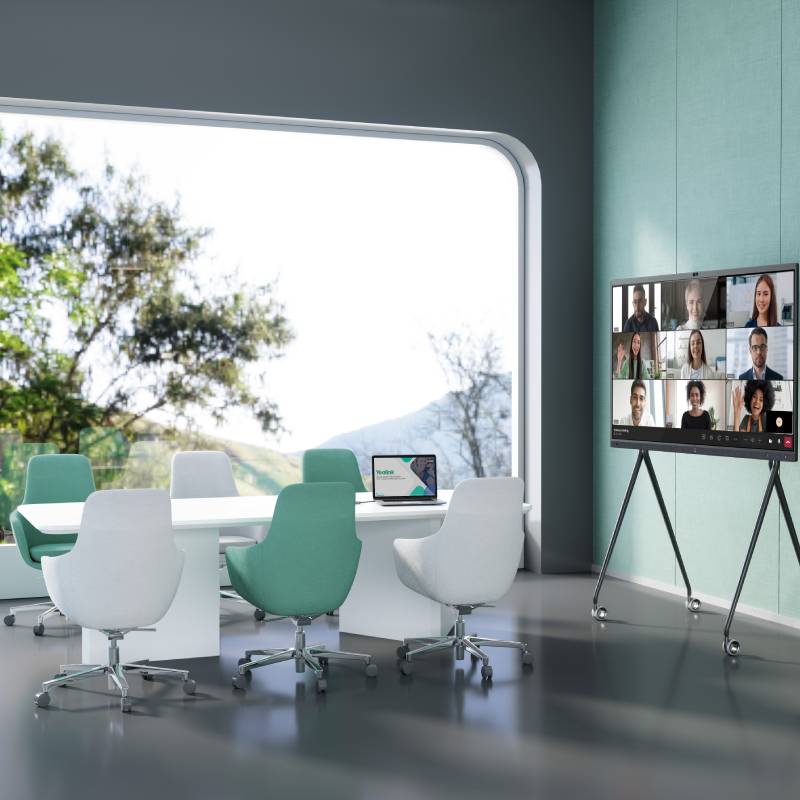
The Yealink MeetingBoard offers the connectivity options to complete your solution.
It offers both a HDMI input and output for increased flexibility across devices. A removable PTZ camera slot is also present to seamlessly create a complete videoconferencing solution.
An ethernet port allows you to collaborate with minimal delay. Audio input and output options also give you many choices to adapt to the room required. 3 USB-A ports present the option for you to control your solution in the way that makes you the most comfortable.
RJ45, Power and Windows OPS slots create a complete solution.
Other Interactive Displays are also offered by ViewSonic, Aver, and IIYama.
Here to Help!
Selecting the correct collaboration solution for your business can be an integral part of the growth of your business, but there is no need to complicate the process by investigating every non-essential feature. This list is intended to help streamline and focus your decision-making so that you can focus other ways to grow. For that reason, our team of experts are available to make the process even easier!
